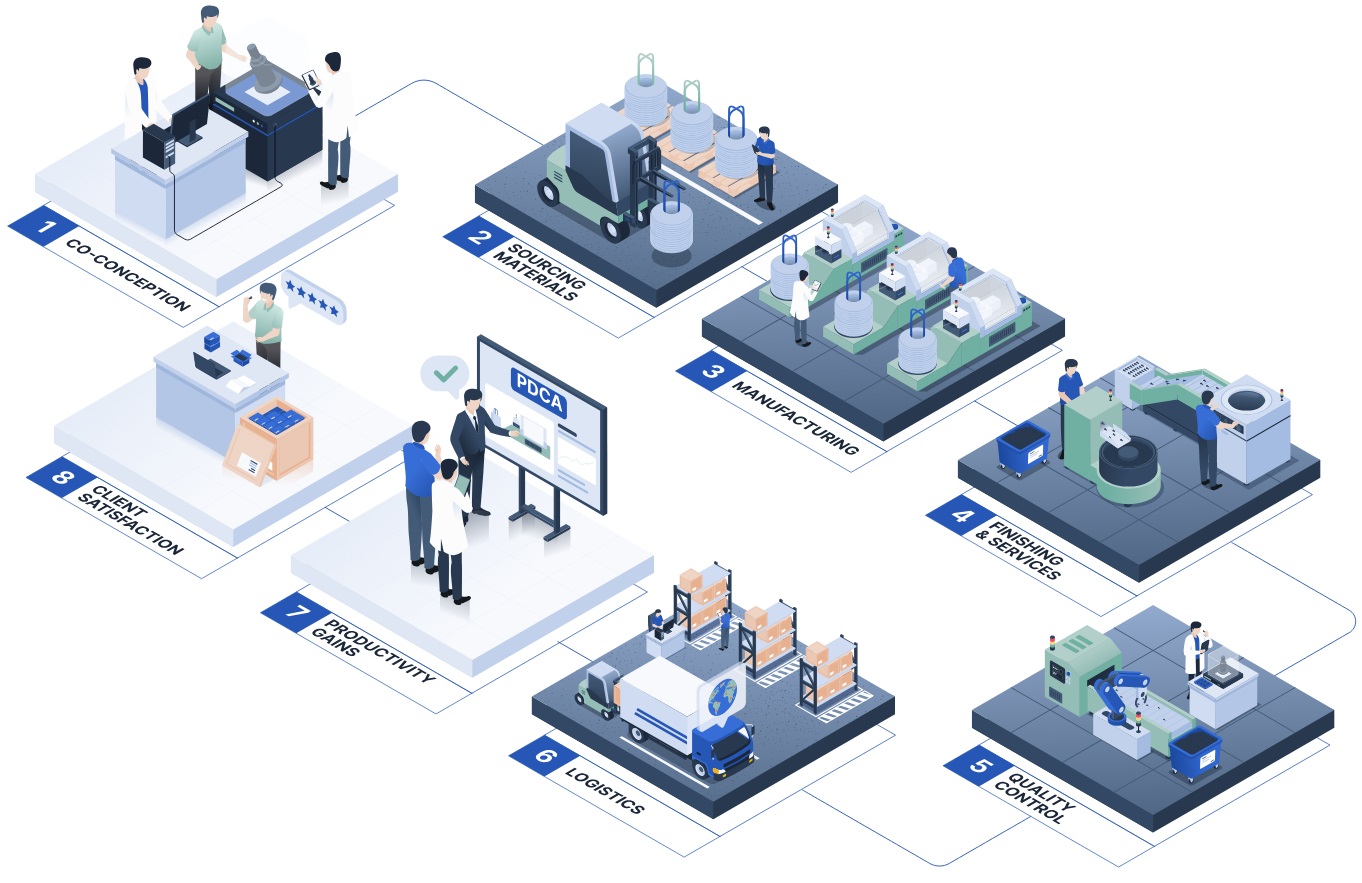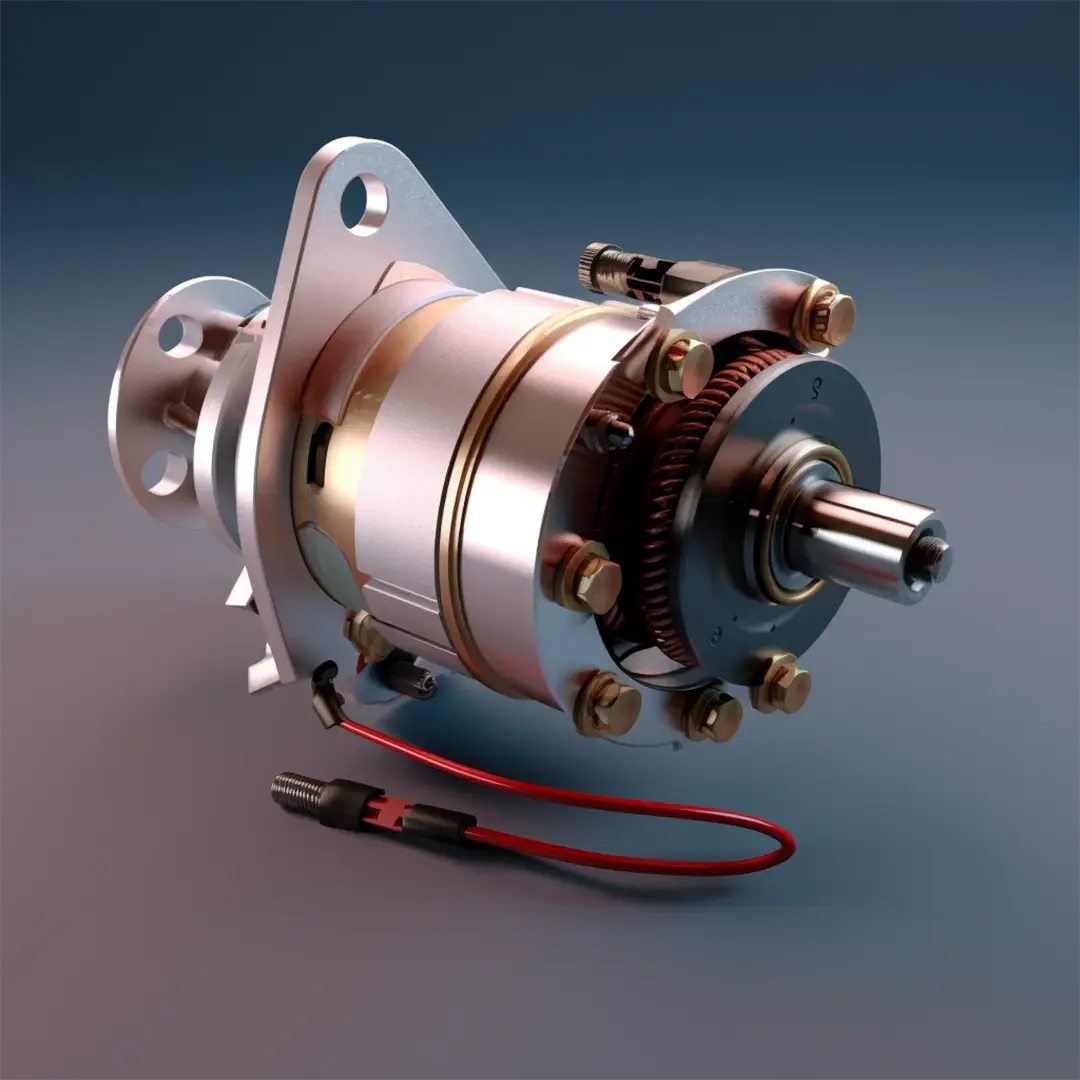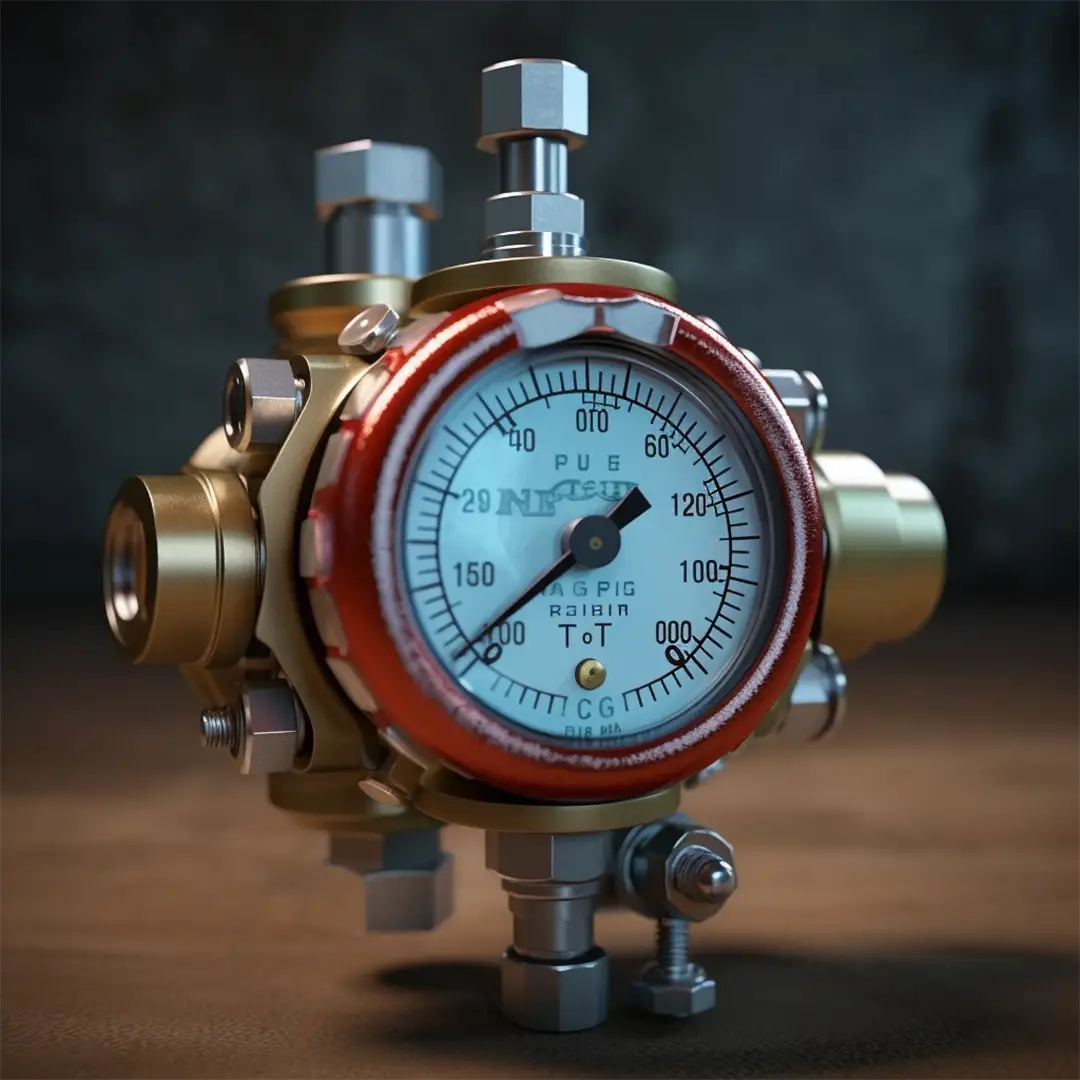2, rue de la Ternière
Avrillé cedex FRANCE
Pins are cylindrical parts used to assemble and position two or more parts together, either temporarily or permanently.
We manufacture solid pins and grooved pins, part of the spring pin family.
- In particular, the splined pin can withstand higher mechanical shear stresses than standard elastic pins.
- The solid pin, on the other hand, will be used in applications where tolerance of fit is required to obtain a good hold.
- As it is more precise when machined, it is more expensive to implement.
Our teams will work with you to determine the optimum choice between an elastic, splined pin and a solid, precision pin.
Pin - Cylindrical pin - Grooved pin





Pin - Cylindrical pin - Grooved pin







- Feasibility checks using the FMEA tool, which is used to analyze failure modes, their effects and criticality.

- Production of initial samples in medium series, and validation of production with PPAPs in accordance with IATF 16949.

- Development of detailed production processes according to the APQP quality process

- Collection and analysis of production data to identify trends and variations. 3PPM in 2023.
The advantages of manufacturing with LGC Industries


.png)

.png)


- 24 Multi-spindle lathes
- 45 Tours Escomatic
- 42 Banding machines
- 8 Plunge and enfilade grinders
Find out more about the technical features of our products
Discover other products
LGC: the grooved pin, pin manufacturer since 1934
Reminder of the basic operation of a pin :
The cylinder pin is intended for use in response to relatively low shear forces.
A pin is used when :
- Securing one part to another: solidarization
- Positioning one part in relation to another: positioning
- Acting as an axis within an assembly: rotation
- Serve as a safety component in an assembly
How to make pins?
There are different methods and different high-performance machines for manufacturing pins. In this section, we'll look at LGC's own pin design process.
Firstly, a dedicated pin-making machine is responsible for shaping the pin. This is done from an iron bar, in the material determined according to your needs (stainless steel, brass, steel, aluminum, etc.).
Pin production stages
- The material enters the machine (in bar form, drawn)
- The machine cuts the bar to size
- The part is cleaned and oiled to facilitate friction between the part and the machine.
Depending on the type of pin required, chamfers and other special features can be added using other specialized machining and screw-cutting equipment.
And depending on its application, the pin can also be given a surface treatment if required.
The rest of the manufacturing process depends on the type of pin you select.
The different types of pins manufactured by LGC
At LGC, we design several types of pins, including the following:
- Cylindrical pin: requires good assembly tolerance.
- The conical pin: allows assembly without great accuracy of diameter.
- The grooved pin: its grooves deform elastically and ensure a tight fit with no play.
- Elastic pin, also known as "mechanindus pin": split longitudinally.
- Tapped pin: facilitates disassembly in blind holes.
Cylindrical pin
Smooth cylindrical pins are cylindrical fasteners resembling a smooth rod, with no grooves or threads. The design of these pins allows them to be machined with chamfered or domed ends, depending on your specific needs and application.
The choice of materials, tolerances and dimensions is left up to the customer during the co-design phase, to meet his requirements perfectly.
Smooth pins are particularly appreciated for their ability to hold mechanical parts together quickly and reliably. These pins are frequently used in applications requiring regular assembly and disassembly, such as industrial machinery, laboratory equipment and the automotive industry.
Ground pins are cylindrical fasteners manufactured with extreme precision to guarantee a perfect fit between the pin and the fastening hole. They are manufactured to micron precision levels and offer exceptional surface quality.
This pin is widely used in applications where fastening precision is paramount, such as machine tools, measuring equipment and medical instruments.
Their difference from plain pins lies in their tolerance on the outside diameter, which further distinguishes them.
Grooved pins are cylindrical fasteners with a series of longitudinal grooves that cause the pin to bend and compress. There are usually 3 splines at an angle of 120°.
Unlike a ground pin, a splined pin does not require a specific fit tolerance, as the elasticity of the splines adapts to the diameter of the hole in which it is inserted. A bulge diameter slightly larger than the nominal diameter guarantees a perfect fit and therefore an excellent hold.
When the pin is pressed into the assembly hole, the splines partially close elastically under pressure, ensuring a perfect fit between the pin and the assembly material. This powerful elastic clamping ensures a very secure hold of the pin, even in the presence of violent vibrations.
The splined pin is often used in applications where a high holding force is required, such as in automotive powertrain applications.
Would you like to find out more about the spline pin?
Visit our dedicated article: All you need to know about the spline pin
Special machined pins are cylindrical fasteners that have been meticulously machined to suit our customers' individual requirements.
Thanks to bar turning and machining operations, we can customize pin geometries such as flat grooves, hinges, threads, branches and milling to meet the specific requirements of each customer.
Some pins, depending on their screw-cutting characteristics, can also be overmolded in injection-molded plastic for special applications.
However, the majority of our customers' applications are made from high-quality metal alloys.
What are the pin standard equivalents?
Standards, whether German (DIN) or international (ISO), define the criteria for the materials, dimensions and mechanical properties of our pins, ensuring their safety and reliability.
Here are the equivalences between din and iso standards for the pins we can design:
- din 1, din 1b or iso 2339: taper pin
- din 1470 or iso 8739: splined pin
- din 1471 or iso 8744: splined pin
- din 1472 or iso 8745: splined pin
- din 1473 iso 8740: splined pin
- din 1474 or iso 8741: splined pin
- din 1475 or iso 8742: splined pin
- din 1481 or iso 8752: mecanindus pin, spring pin
- din 6325 or iso 8734: ground cylindrical pin
- din 7 or iso 2338: cylindrical pin
- din 7977 or iso 8737: tapered pin with threaded stud
- din 7978 or iso 8736: tapped conical pin
- din 7979, din 7979d or iso 8735: threaded pin
- din 94 or iso 1234: cotter pin






















